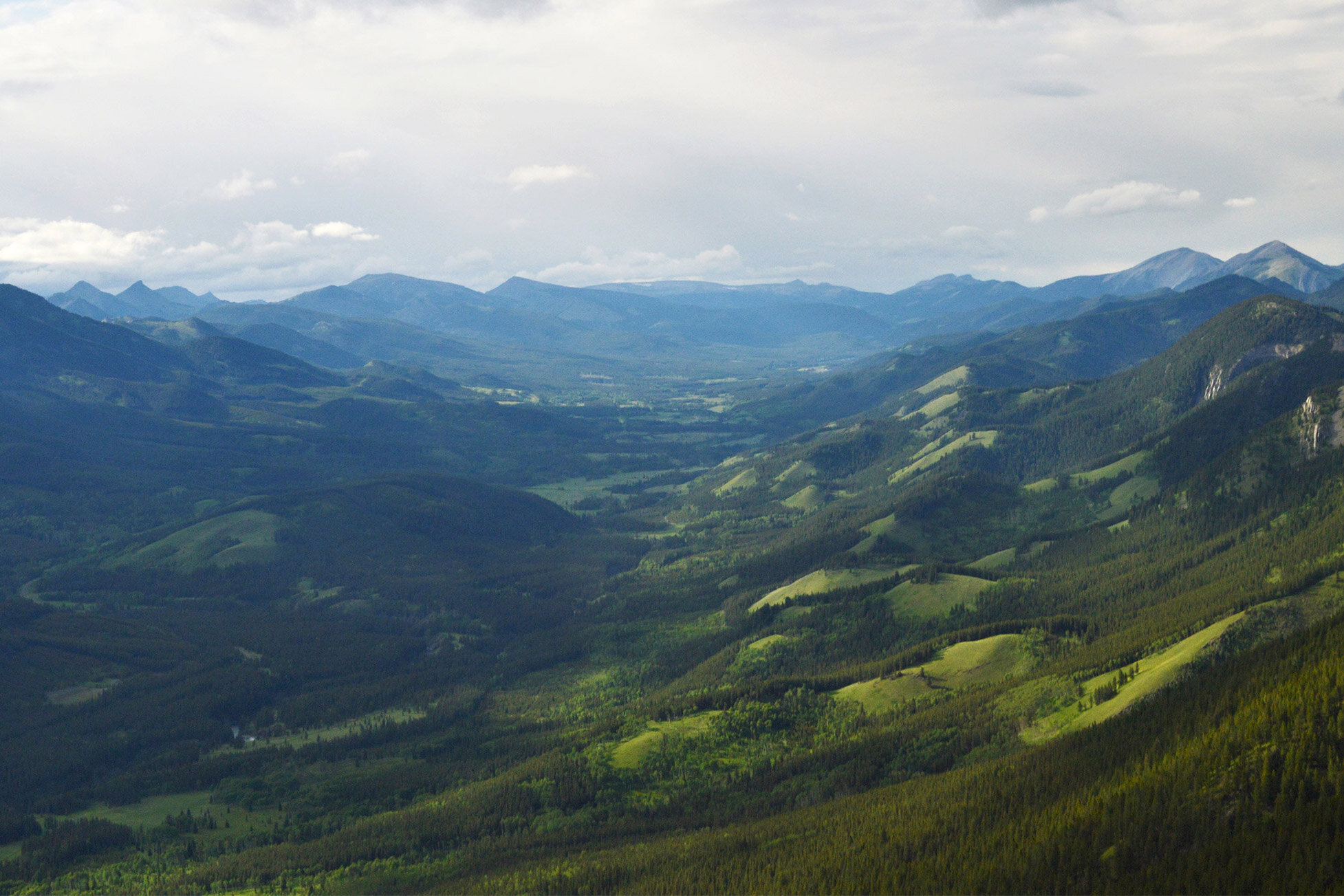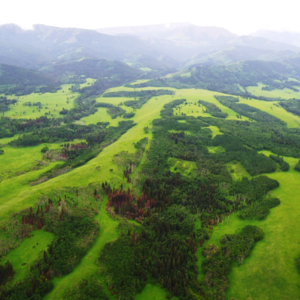Over the Rocky Mountains and all they way to Victoria, BC, Ceres Barros is working on her computer. Under her desk sits her backpack, still containing gear from her recent trip to the Landscapes in Motion study area. Unpacking can wait—her visit to the field, and the patchy landscapes she saw from the helicopter window, are vivid in her mind as she crafts the model parameters that will shape the way her simulated forests burn and regenerate.
Models like the one she is working on are powerful tools for both researchers and decision-makers. Many modern landscape management approaches use historical processes and patterns as a template to help establish management directions, which means that having the most accurate models is key.
Why model fire on a landscape?
Complex models are all about relationships and feedbacks. Changing one thing, like how many trees die when a stand burns, has the power to change the trajectory of a forest. If all the trees die, then the new stand is all young trees; if only some of the trees die, the new stand is a mix of ages and sizes. These two stands have the potential to grow differently, burn differently, and regenerate differently—over time, they may become two very different forests.
But it is not possible to manipulate fire severity and tree mortality on a true landscape to learn how they shape regenerating forests. This is why computer models, and the work of the Modelling team, are incredibly important for understanding the domino effects when part of a complex system like a fire-prone forest changes.
Ultimately, the Modelling team is in pursuit of a more realistic model of landscape dynamics in southwestern Alberta. As models become more realistic, decision-makers are able to make better-informed decisions, and researchers are better able to explore past and future dynamics.
Changing the way forests are expected to burn in models
Every model is built using what are hoped to be the most important variables, such as tree biomass, weather and fuel conditions. More complex models may also include other models nested within them, for example models of fire ignition rates or tree growth rates.
Every modeller is faced, therefore, with important decisions about which variables and models to include and why. As the other Landscapes in Motion teams have found, in the case of southwest Alberta this question often boils down to: what kind of fire regime has historically shaped the landscape?
The Modelling team created a set of simulations to see how these variables and assumptions interact to shape the landscape (the LIM study area) over time. They started with a baseline landscape using existing climate data and landcover data representing landscape conditions of the late 20th century, then simulated how trees grow, reproduce and die, and how many fires start and how they spread, each year for 100 years.
The key difference in the simulations was the assumption of stand-replacing fires versus partial mortality. Stand-replacing fires occur when a high-severity fire kills all the trees in a stand, while partial mortality refers to a stand where some trees die and others survive, depending on the fire’s severity. The forests of southwestern Alberta have long been assumed to be shaped by stand-replacing fires, yet recent evidence (including the results of the Fire Regime and Visual Applications teams) suggests partial mortality fires may have been quite common. The Modelling team’s simulations have tested these assumptions to learn more about how these two different fire regimes shape these landscapes.
Partial (fire) mortality leads to higher landscape biodiversity
The simulation that accounted for partial mortality of burned forests led to landscapes that were patchier, had a more even representation of forest types, and had many more old forest stands.
In the simulation that assumed stand-replacing fires, the landscape became more uniformly dominated by pine species (and white spruce at higher elevations). Engelmann spruce, fir and Douglas-fir forests, in contrast, declined or were lost across much of the landscape.
This creates a strong contrast with the simulation that accounted for partial mortality. When tree, fuel and fire conditions determined the likelihood of trees surviving a fire, suddenly Douglas-fir trees became frequent survivors. Burned areas also had higher stand-level tree diversity compared with those that did not, suggesting that wildfire (specifically, low- to moderate-severity fires) was an important driver of stand-level biodiversity.
Across the landscape in the partial mortality simulation, more stands were dominated by species other than pine (e.g., white spruce and Douglas-fir) and by older trees. Rather than being uniform and dominated by one or two tree species, these landscapes were more biodiverse; this difference could have important implications for wildlife, resilience, and more.

The model with partial mortality aligned better with on-the-ground data
The Modelling team compared the simulated forest age data with the results of the Fire Regime team’s dendroecological results (forest ages according to tree-ring analysis). Accounting for partial mortality led to smaller differences between simulated and observed ages across forest cover types—i.e., it created a more realistic model for the LIM study area. While exciting from a scientific standpoint, this also suggests that this model would be more useful for management because it is more accurate than the stand-replacing model.
What does it all mean?
The results of these two simulations have important implications for understanding the landscape dynamics of southwest Alberta.
Diverse landscapes like the ones produced by the partial mortality model are often linked to higher wildlife biodiversity because they provide a wide range of habitats that different species need. Diverse landscapes also present an important contrast to large, uniform, (often pine-dominated) forests when it comes to resiliency to disturbances. In western Canada, large, even-aged pine stands have been particularly vulnerable to mountain pine beetle outbreaks and massive wildfires, one often following the other. Without breaks in the forest caused by patches of other species (like aspen or Douglas fir) or other land cover types (like grassy meadows), these disturbances are able to spread rapidly, with devastating consequences for forests and the people who rely on them.
These findings also have implications for forest management. The forest management community has, by and large, adopted many principles of Ecosystem-based Management and Natural Range of Variation. This means that information about natural disturbance processes directly influences the way that forests are managed, and the kinds of forests that result. The findings presented here suggest that in southwest Alberta, disturbances that have variable severity will lead to very different landscapes than stand-replacing disturbances.









